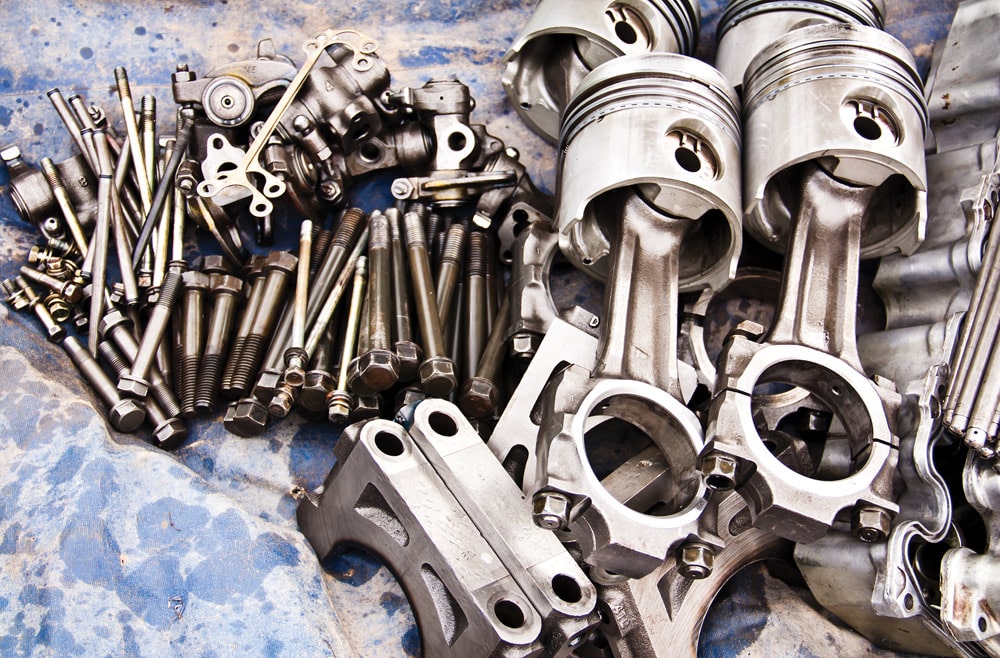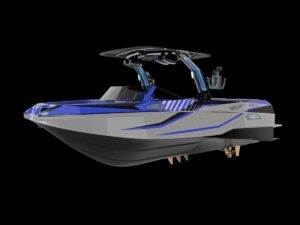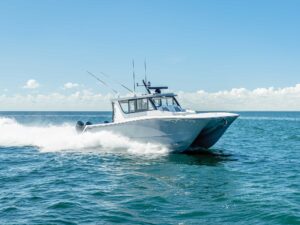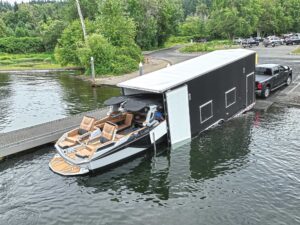Your boat’s once-purring power plant now sounds like a bucket of bolts. The block is a goner, and you’ve got three choices: Buy another engine, rebuild ol’ Nelly Belle, or get a rebuilt block.

Rebuild Versus Buying a Rebuilt Engine Block
A new engine sounds sweet, but you’re looking at big bucks. And while a used motor costs less, you might be inheriting problems. So it boils down to a rebuild or a rebuilt (aka reconditioned) block.
Your decision should hinge on two factors related to your existing engine, says Bill Grannis of New Smyrna Beach, Florida, who has spent the last 40 years servicing and repairing marine engines for a variety of boat dealers and service shops. You need to look at (1) the age of the engine and (2) where it was used.
“If your outboard has been run for 10 years or more in salt water, it’s not worth having a shop rebuild it,” Grannis says. The reason: accumulated corrosion. You just don’t know what the cooling passages look like after so many years of saltwater use. This also applies more to inboard engines with raw-water cooling systems.
If the engine block has a closed-cooling system or was used exclusively in fresh water, it might be a candidate for rebuilding, especially if it’s fewer than 10 years old, Grannis says. “You really have to look at each motor case by case.”
If going with a reconditioned block, the veteran marine technician suggests dealing with a reputable company such as CVTech (cvtech-aab.com),
Doug Russell Marine (dougrussell.com), Jasper Engines (jasperengines.com), Riverside Marine (riversidemarine.info), SEI Marine Products (shopsei.net) or TCM (tcmarineengines.com). Quality rebuilders will inspect and test all blocks first, avoiding those used in salt water, to make sure they’re prime candidates, Grannis says.
With reconditioned engines, you often have a choice between a short or a long block. While the parts might vary, a short block usually includes “bottom end” components such as the crankcase, crankshaft, pistons and rings, connecting rods, seals and bearings, and sometimes the camshaft and timing parts. A long block includes all of the above, plus parts like the heads, valves, intake and exhaust manifolds, valve covers and oil pan. Some rebuilders also sell reconditioned engines that are virtually complete at prices below those of new engines.
If you can salvage parts from ol’ Nelly Belle, you might save some dollars on a short block. Yet Grannis warns that cutting corners can prove shortsighted, whether you’re opting for a rebuilt or a rebuild.
“You might as well have everything new up front,” he says, “because going back in and replacing some old part that wears out a month later will probably cost you even more.
Having a shop rebuild your engine is usually less expensive than buying a reconditioned one. “I’d usually charge between $2,000 and $3,000 to rebuild a V-6 outboard powerhead,” Grannis reveals. “But if I ordered a reconditioned powerhead, it would end up around $3,000 to $4,000.”
Grannis points to two advantages of reconditioned blocks — warranty and time. “Most reconditioned motors carry a longer warranty than one that a shop rebuilds,” he explains. “And if there’s a major failure during the warranty period, a company like Doug Russell can ship out a new block right away, while a repair shop usually takes much longer for tear-down, diagnosis and repair.”
Finally, he outlines a third less-tangible benefit of a reconditioned block — peace of mind in knowing it was put together by technicians who do this all the time. “Most marine mechanics can’t say that,” Grannis says. “Not even me.”









